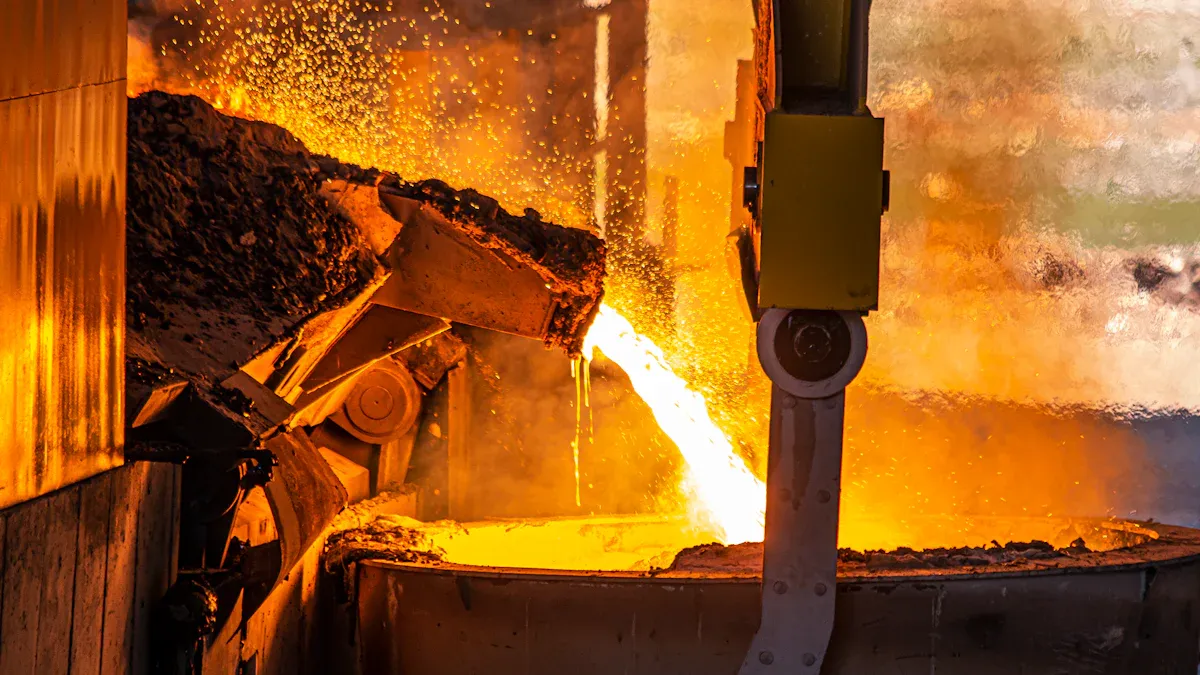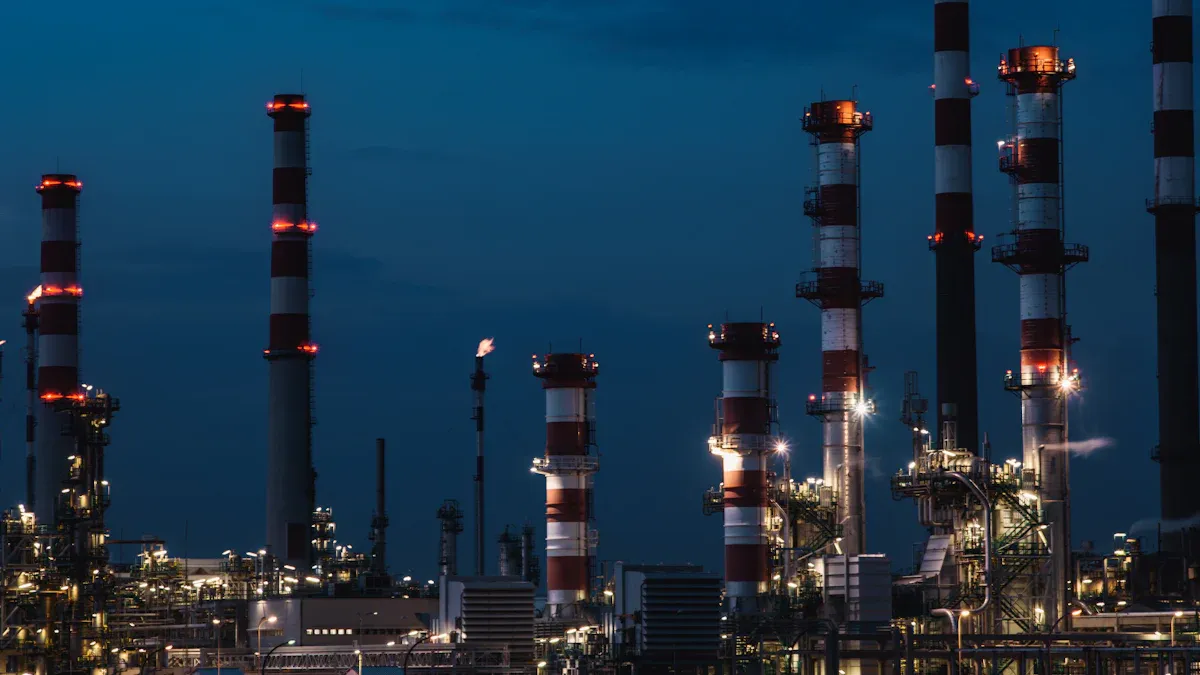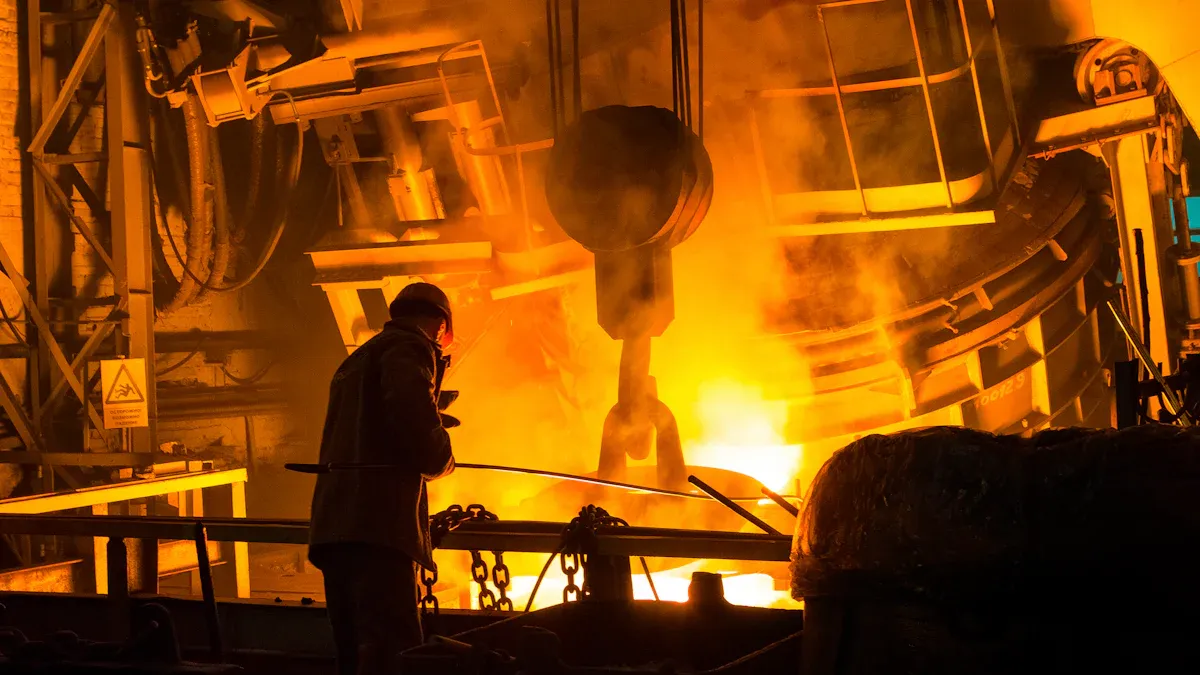How stainless steel castings transform oil and gas manufacturing?

Stainless steel precision castings for Oil and Gas are essential to the industry, offering exceptional durability and precision. Manufactured through the precision investment casting process, these components are designed to perform reliably in demanding environments, effortlessly withstanding high pressure and extreme temperatures. Additionally, lost wax precision castings for Oil and Gas provide superior corrosion resistance, enhancing safety and operational efficiency across various applications.
Key Takeaways
- Stainless steel castings are strong and accurate, making them vital for oil and gas work.
- The casting process creates top-quality parts that handle tough conditions, boosting safety and work efficiency.
- Engineers can customize castings to fit exact needs, helping them work better in tough oil and gas jobs.
Stainless Steel Precision Castings for Oil and Gas: An Overview
What Are Stainless Steel Precision Castings?
Stainless steel precision castings are high-quality components created using the investment Casting Process. This method involves pouring molten stainless steel into a ceramic mold to achieve intricate shapes and tight tolerances. These castings are known for their exceptional strength, corrosion resistance, and ability to withstand extreme conditions.
In oil and gas manufacturing, precision matters. Components like valves, pumps, and fittings require exact dimensions to ensure seamless operations. Stainless steel precision castings meet these demands with tolerances as tight as +/- 0.005 inches for smaller dimensions. The table below highlights typical tolerances:
| Dimension Size | Tolerance |
|---|---|
| Up to 0.5" | +/- 0.005" |
| Up to 1" | +/- 0.010" |
| Each additional inch | +/- 0.003" |
These castings also adhere to industry standards like ASTM A995 and ASTM A890, ensuring durability and resistance to harsh environments.
Why Are They Essential for Oil and Gas Applications?
The oil and gas industry operates in some of the most challenging environments on Earth. High pressures, extreme temperatures, and corrosive substances are common. Stainless steel precision castings excel in these conditions, offering unmatched reliability and performance.
Their importance is underscored by market growth. The global stainless steel casting market, valued at USD 17 billion in 2022, is projected to reach USD 25 billion by 2030, growing at a CAGR of 6%. This rise reflects the increasing demand for durable and precise components in oil and gas manufacturing.
Additionally, these castings provide flexibility in design. Engineers can customize components to meet specific requirements, whether for offshore drilling rigs or refinery equipment. Features like linear and geometric tolerances ensure precision, while weight tolerances account for variations in casting weights.
Stainless steel precision castings for Oil and Gas are not just components; they are the backbone of safe and efficient operations in the industry.
Manufacturing Process of Stainless Steel Precision Castings for Oil and Gas

Step-by-Step Investment Casting Process
The investment casting process, also known as lost wax casting, is a precise and versatile method used to create stainless steel precision castings for oil and gas applications. This process ensures components meet the industry's demanding requirements for strength, durability, and corrosion resistance. Here's how it works:
- Wax Pattern Creation: A wax model of the desired component is crafted. This pattern replicates the final product's intricate details and dimensions.
- Assembly: Multiple wax patterns are attached to a central wax sprue, forming a "tree" structure. This setup allows multiple castings to be produced simultaneously.
- Ceramic Shell Formation: The wax tree is dipped into a ceramic slurry and coated with fine sand. This step is repeated several times to build a robust ceramic shell.
- Wax Removal: The ceramic-coated wax tree is heated, melting the wax and leaving behind a hollow ceramic mold.
- Metal Pouring: Molten stainless steel is poured into the ceramic mold. The metal fills the cavity, taking the shape of the original wax pattern.
- Cooling and Solidification: The molten metal cools and solidifies within the mold, forming the casting.
- Shell Removal: The ceramic shell is broken away, revealing the raw casting.
- Finishing: The casting undergoes processes like grinding, machining, and polishing to achieve the desired surface finish and dimensional accuracy.
This method delivers exceptional precision, with tolerances as tight as +/- 0.010 inches for dimensions up to 1 inch. The table below highlights typical tolerances for various dimensions:
| Dimensions | Normal Tolerance of Investment Casting |
|---|---|
| Up to 1” | +/- .010” |
| Up to 2” | +/- .013” |
| Up to 3” | +/- .016” |
| Up to 4” | +/- .019” |
| Up to 5” | +/- .022” |
| Up to 6” | +/- .025” |
| Up to 7” | +/- .028” |
| Up to 8” | +/- .031” |
| Up to 9” | +/- .034” |
| Up to 10” | +/- .037” |
| > 10” | Allow +/- .005” per inch |
Note: Wall thickness tolerances must be a minimum of +/- .020 inches, ensuring structural integrity in critical applications.
This process is widely used to produce components like valves, pumps, and fittings, which are essential for oil and gas operations.

Quality Control and Customization for Oil and Gas Needs
Producing stainless steel precision castings for oil and gas requires rigorous quality control and customization to meet the industry's exacting standards. Every step of the process is carefully monitored to ensure components perform reliably in harsh environments.
Key Quality Control Benchmarks:
| Quality Control Benchmark | Description |
|---|---|
| Heat Treatment | Enhances hardness, strength, and corrosion resistance by altering metal properties. |
| Post-Machining | Ensures dimensional accuracy and smooth surface finishes through additional machining. |
| Surface Treatment | Improves corrosion and wear resistance, boosting both performance and aesthetics. |
| Comprehensive Quality Control System | Covers all production steps, from raw material procurement to final inspection. |
These benchmarks ensure that every casting meets or exceeds industry standards, such as ISO 13709 for centrifugal pumps and ISO 15761 for small-diameter steel valves.
Customization for Oil and Gas Applications:
Customization plays a vital role in tailoring castings to specific oil and gas needs. Engineers can select from a variety of stainless steel grades, each offering unique properties:
- Stainless Steel 304: Known for its cleanliness and corrosion resistance, ideal for petrochemical applications.
- Stainless Steel 316: Offers superior corrosion resistance, making it suitable for offshore environments.
- Duplex Stainless Steel 2205: Combines strength and corrosion resistance, perfect for high-pressure systems.
- Super Duplex Stainless Steel 2507: Designed for extreme conditions, such as marine and chemical processing.
By combining advanced quality control measures with tailored material selection, manufacturers deliver castings that meet the oil and gas industry's stringent demands.
Key Takeaways:
- The investment casting process ensures precision and durability, making it ideal for oil and gas components.
- Rigorous quality control benchmarks, such as heat treatment and surface finishing, guarantee reliability.
- Customization options, including material selection, allow engineers to design components for specific applications.
Benefits and Real-World Applications of Stainless Steel Precision Castings

Key Advantages in Oil and Gas Manufacturing
Stainless steel precision castings bring a host of advantages to oil and gas manufacturing, making them indispensable in this demanding industry. Their ability to withstand extreme conditions, such as high pressures and temperatures, ensures reliable performance in critical applications. For instance, compressors used in oil and gas operations rely on these castings for their exceptional strength and corrosion resistance. This durability reduces the need for frequent replacements, saving both time and money.
Another key benefit lies in their design flexibility. Engineers can create intricate shapes and complex geometries that would be challenging with other manufacturing methods. This versatility allows for the production of custom components tailored to specific operational needs, whether for offshore drilling rigs or refinery equipment.
Cost-effectiveness is another standout feature. While the initial investment in stainless steel precision castings may seem higher, their long-term benefits far outweigh the costs. Their durability and resistance to wear and tear minimize maintenance expenses, making them a smart choice for companies looking to optimize their operations.
The rising demand for high-performance compressors in the oil and gas sector highlights the operational benefits of these castings. Their ability to endure harsh environments while maintaining efficiency underscores their value in this industry.
Key Takeaway: Stainless steel precision castings offer unmatched durability, design flexibility, and cost-effectiveness, making them a cornerstone of modern oil and gas manufacturing.
Real-World Examples of Components and Case Studies
The real-world applications of stainless steel precision castings in oil and gas operations demonstrate their transformative impact. From valves and pumps to fittings and compressors, these components play a vital role in ensuring smooth and efficient operations.
A notable case study highlights the development of a steel casting solution that exceeded industry standards. The process involved advanced material selection, intricate CAD designs, and innovative techniques like vacuum-assisted casting. Non-destructive testing and rigorous quality control ensured the final product met the highest performance expectations.
| Aspect | Details |
|---|---|
| Objective | Develop a steel casting solution that meets industry standards and exceeds performance expectations in oil and gas operations. |
| Methodology | 1. Material Selection: Advanced alloy with superior mechanical properties. 2. CAD: Intricate designs to optimize casting. 3. Simulation: Analyze and optimize. 4. Innovative Techniques: Vacuum-assisted casting and precision molding. 5. Quality Control: Non-destructive testing and inspections. |
| Results | - Strength and Durability: Increased strength and wear resistance. - Production Efficiency: Reduced production time. - Quality Assurance: Exceeded industry standards. |
This case study underscores the importance of stainless steel precision castings in achieving operational excellence. By leveraging advanced techniques and materials, manufacturers can deliver components that not only meet but exceed the rigorous demands of the oil and gas industry.
Key Takeaway: Real-world applications and case studies reveal how stainless steel precision castings enhance performance, reduce costs, and ensure reliability in oil and gas operations.
Stainless steel precision castings for Oil and Gas have revolutionized the industry. Their unmatched durability and precision ensure safer and more efficient operations. These castings reduce costs and improve reliability in challenging environments. As innovation continues, they will play an even greater role in shaping the future of oil and gas manufacturing.
FAQ
What makes stainless steel precision castings better than other materials for oil and gas?
Stainless steel offers superior corrosion resistance, strength, and durability. These qualities make it ideal for harsh environments like high-pressure and high-temperature oil and gas operations.
Can stainless steel castings be customized for specific oil and gas applications?
Yes! Engineers can tailor designs, dimensions, and materials to meet unique requirements, ensuring components perform optimally in specialized environments like offshore rigs or refineries.
Are stainless steel castings cost-effective for oil and gas manufacturing?
Absolutely! While the upfront cost may be higher, their durability and low maintenance reduce long-term expenses, making them a smart investment for reliable operations.
Tip: Always consult with manufacturers to select the right stainless steel grade for your specific application.















